Ball pythons, known scientifically as Python regius, have become beloved pets in households worldwide due to their manageable size, docile nature, and relatively straightforward care requirements. Native to West and Central Africa, these reptiles thrive in specific environmental conditions that pet owners must recreate in captivity. Creating a proper habitat isn’t just about aesthetics—it directly impacts your snake’s physical health, emotional well-being, and longevity. A stressed ball python may refuse meals, develop health issues, or display abnormal behaviors. This comprehensive guide will walk you through everything you need to know to create a comfortable, low-stress environment where your ball python can thrive for its 20-30 year lifespan.
Understanding Ball Python Behavior and Natural Habitat
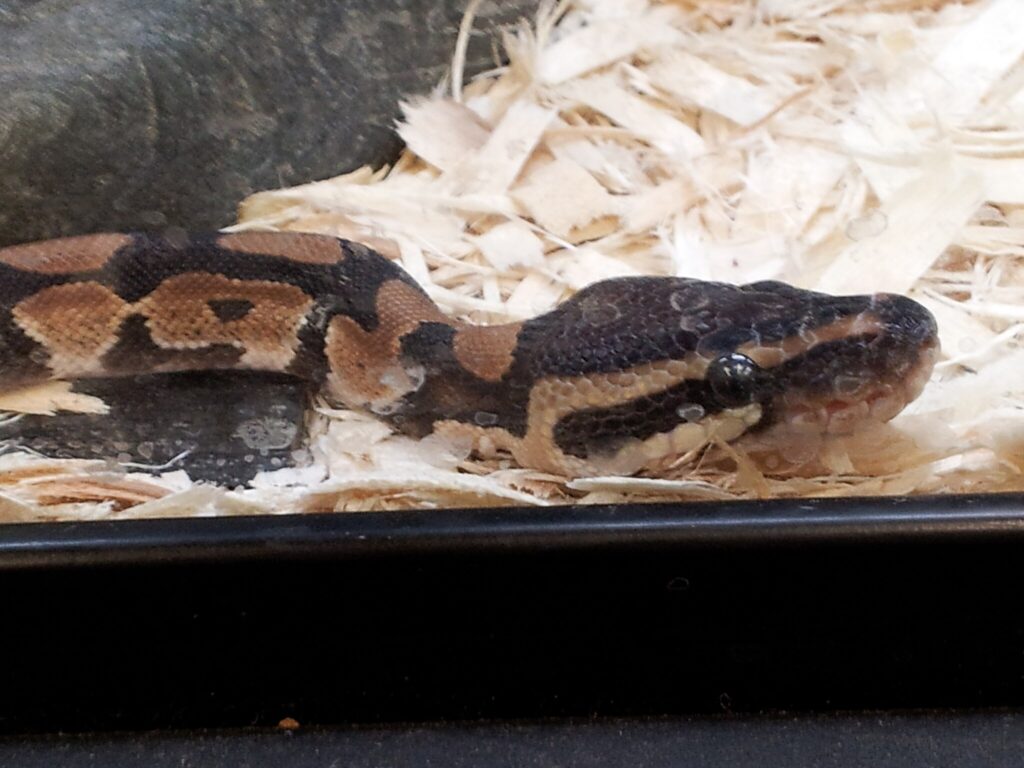
Ball pythons earned their common name from their defensive behavior of curling into a tight ball when threatened, tucking their head in the center for protection. In the wild, these primarily nocturnal reptiles inhabit grasslands, savannas, and sparsely wooded areas in West and Central Africa. They spend much of their time in underground burrows or termite mounds, which provide shelter from predators and help maintain optimal temperature and humidity levels. Ball pythons are generally solitary creatures that come together primarily for breeding purposes. Understanding these natural behaviors and habitat preferences is crucial for creating an appropriate captive environment that minimizes stress and promotes natural behaviors.
Selecting the Right Enclosure Size
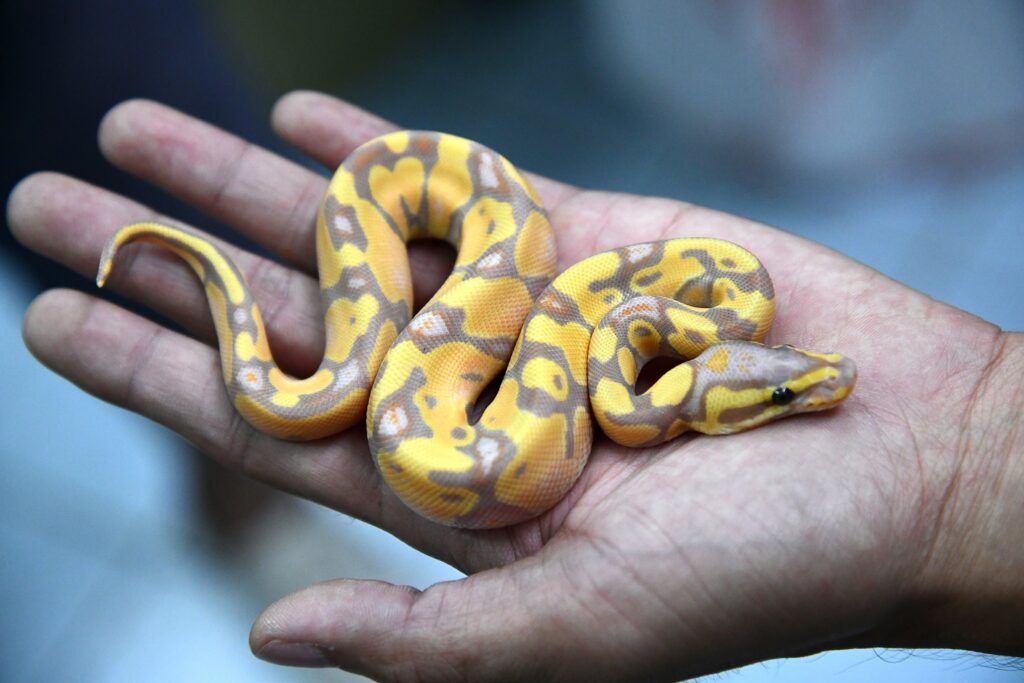
One of the most common misconceptions about ball pythons is that they need enormous enclosures to thrive. In reality, these snakes prefer secure, somewhat confined spaces that make them feel protected rather than exposed. For juvenile ball pythons (under 2 feet long), a 20-gallon enclosure is typically sufficient, while adults (3-5 feet long) require at minimum a 40-gallon enclosure or one measuring approximately 36″ x 18″ x 12″. Contrary to popular belief, an enclosure that’s too large can actually cause stress in ball pythons, making them feel vulnerable and exposed. However, the enclosure should still provide enough space for the snake to fully stretch out, exercise, and maintain separate temperature zones for thermoregulation.
Choosing Between Different Enclosure Types
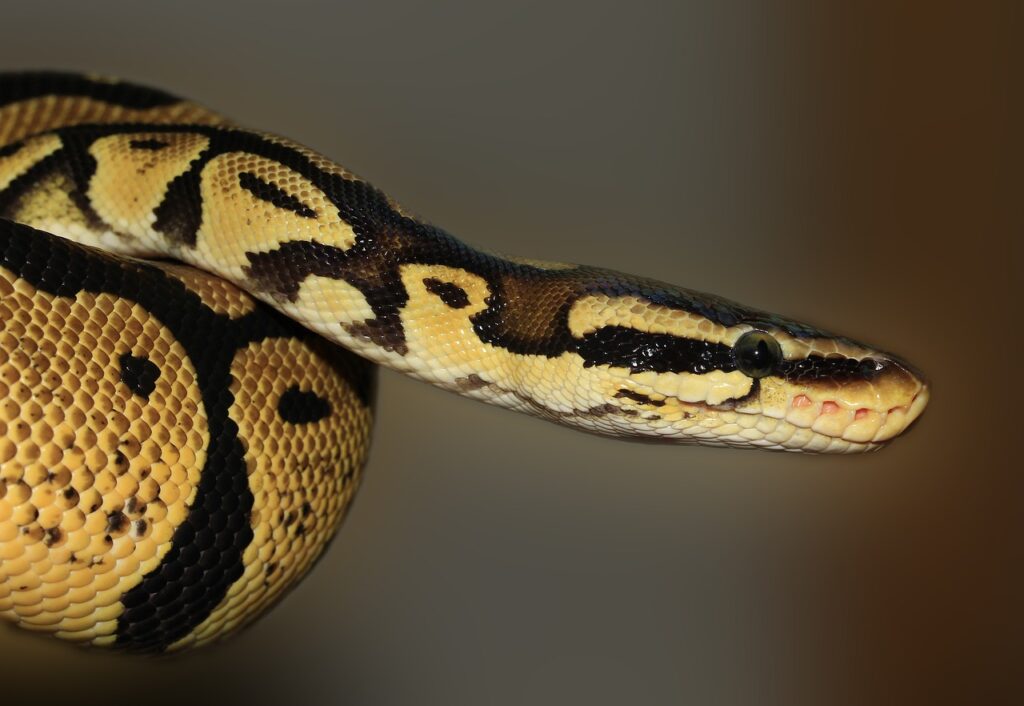
Ball python owners can choose from several enclosure types, each with distinct advantages and disadvantages. Glass terrariums offer excellent visibility and typically feature screen tops for ventilation, though they may struggle to maintain proper humidity and heat. PVC or plastic enclosures have become increasingly popular because they provide better insulation, maintain humidity more effectively, and often feature front-opening doors that cause less stress during maintenance than top-opening enclosures. Wooden vivariums offer excellent insulation properties but require proper sealing to prevent moisture damage and may harbor mites if not properly maintained. Rack systems, while space-efficient for breeders, generally don’t provide adequate enrichment opportunities for pet ball pythons and should be avoided unless modified substantially with climbing features, visual barriers, and proper lighting.
Creating Proper Temperature Gradients
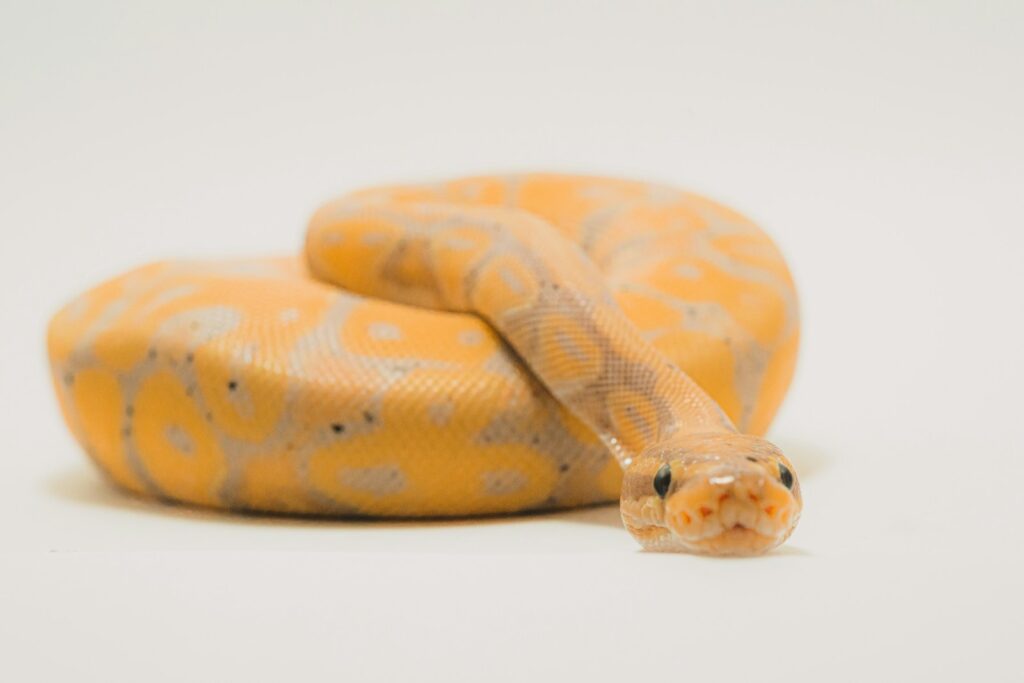
Temperature regulation is critical for ball python health as these ectothermic animals rely on external heat sources to maintain their body temperature and proper digestion. The enclosure should feature a temperature gradient with a warm side (88-92°F) and a cooler side (76-80°F), allowing the snake to thermoregulate by moving between areas as needed. Primary heating options include under-tank heaters (UTHs), radiant heat panels, ceramic heat emitters, and deep heat projectors, all of which should be connected to a reliable thermostat to prevent dangerous temperature fluctuations or burns. Avoid heat rocks, which can cause severe thermal burns, and standard light bulbs that disrupt the day/night cycle. Temperature should be monitored daily using digital thermometers or temperature guns placed at both ends of the enclosure and at the substrate level where your snake spends most of its time.
Maintaining Optimal Humidity Levels
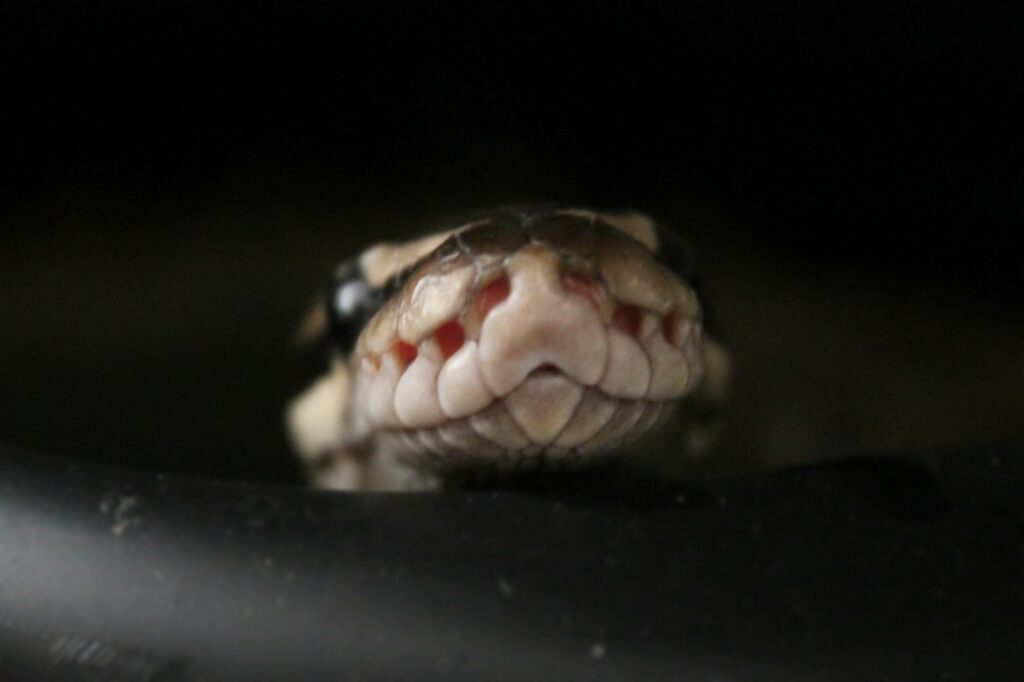
Proper humidity is essential for ball python health, particularly for successful shedding and respiratory function. The ideal humidity range for ball pythons is between 50-60% for general maintenance, increasing to 60-70% during shedding periods. Low humidity can lead to incomplete sheds, respiratory infections, and dehydration, while excessive moisture can cause scale rot and respiratory issues. Humidity can be maintained through several methods, including using a moisture-retaining substrate, providing a large water bowl (which also serves for drinking and occasional soaking), misting the enclosure as needed, and using a reptile humidifier for consistent control. For enclosures that struggle to maintain humidity, covering a portion of the ventilation or using a humidity box filled with damp sphagnum moss can create a microclimate for the snake to access when needed.
Selecting Appropriate Substrate Materials
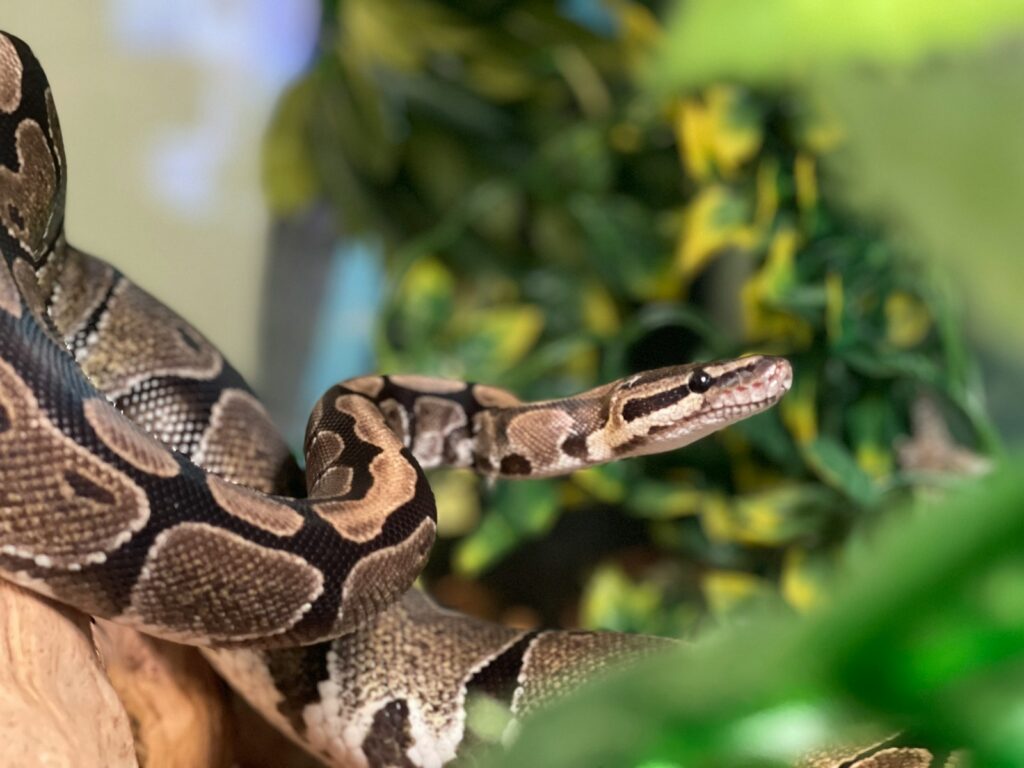
The substrate forms the foundation of your ball python’s habitat and serves multiple functions beyond aesthetics, including moisture retention, waste management, and providing a comfortable surface for movement. Cypress mulch is highly recommended for its excellent humidity retention, natural appearance, and resistance to mold. Coconut husk products like reptile bark or coconut fiber also work well, though they may require more frequent misting to maintain humidity. Paper towels or newspaper, while not naturalistic, offer easy cleaning and monitoring for very young snakes or during quarantine periods. Avoid pine and cedar substrates, which contain harmful phenols, as well as sand, gravel, or reptile carpet, which can cause impaction if ingested or harbor bacteria between cleanings. The substrate should be at least 2-3 inches deep to allow for natural burrowing behaviors and should be spot-cleaned daily with a complete replacement every 1-3 months depending on the type used.
Providing Essential Hides and Security

Ball pythons are naturally secretive animals that require multiple secure hiding spots to feel safe and reduce stress. At minimum, provide two identical hides—one on the warm side and one on the cool side of the enclosure—allowing your snake to regulate its temperature without sacrificing security. Effective hides should be snug (the snake should touch at least three sides when curled inside), have a single entrance, and be completely enclosed to create darkness. Commercial reptile hides, upturned flower pots, hollowed cork bark, or DIY options made from plastic containers all work well as long as they provide the necessary security. In addition to primary hides, incorporating clutter such as artificial plants, branches, and additional cover throughout the enclosure creates travel corridors that allow the snake to move between areas while feeling protected, significantly reducing stress during active periods.
Implementing Proper Lighting Cycles
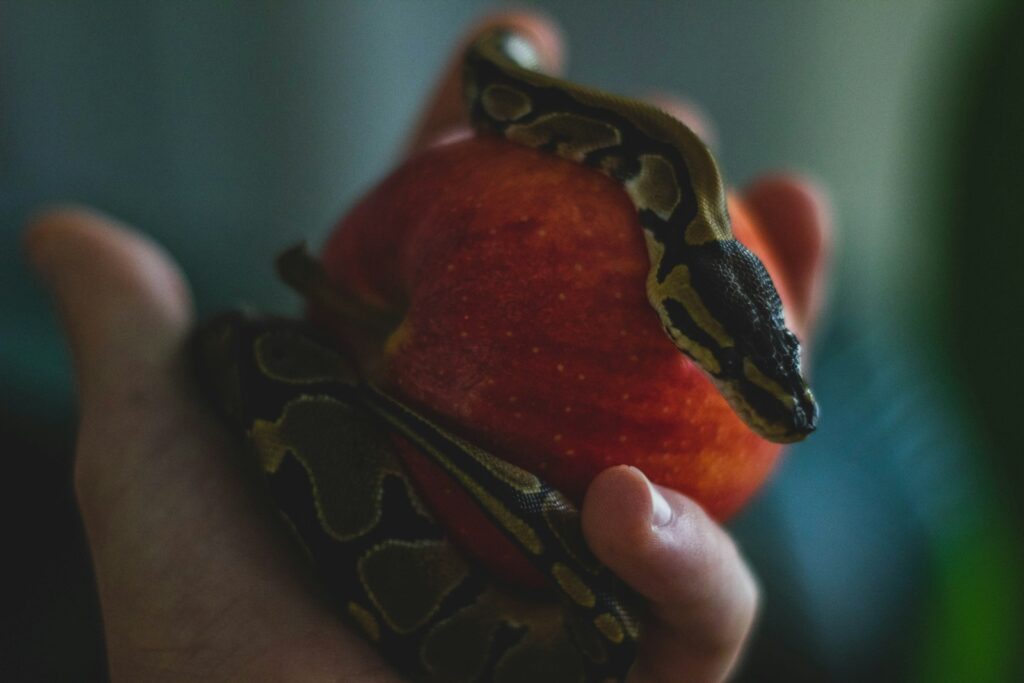
While ball pythons don’t require UVB lighting for vitamin D synthesis like some reptiles, maintaining a consistent day/night cycle is crucial for their physiological processes and natural behaviors. Provide approximately 12 hours of indirect, ambient light followed by 12 hours of darkness, adjusting slightly with seasonal changes if desired. Harsh direct lighting can stress these primarily nocturnal animals, so any lighting should be diffused and not aimed directly at hiding areas. For viewing purposes, low-intensity LED lights or specialized reptile day bulbs work well, while all light sources should be turned off at night, using heat sources that don’t emit light (such as ceramic heat emitters) for nighttime temperature maintenance. Some keepers report behavioral benefits from low-level UVB exposure, but this remains optional rather than essential for ball pythons, unlike for many lizard species.
Adding Enrichment Features
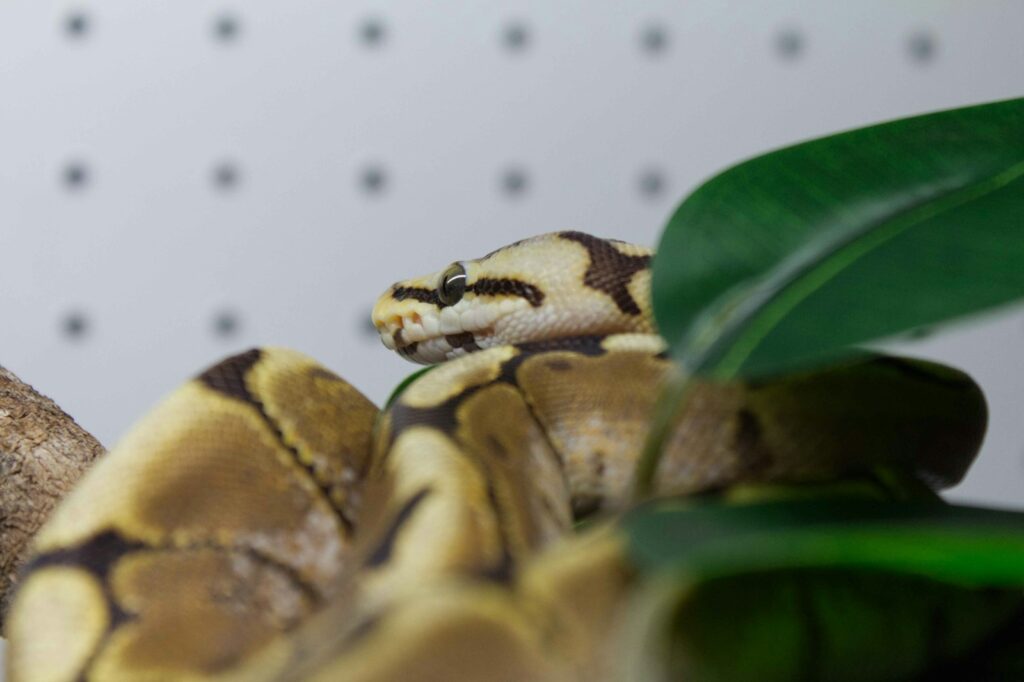
Contrary to outdated husbandry approaches, ball pythons benefit significantly from environmental enrichment that allows them to express natural behaviors. Sturdy branches or reptile-safe climbing structures provide opportunities for exploration and exercise, though they should not be so tall that falls could cause injury. Half-buried cork tubes create both climbing opportunities and additional hiding spots that mimic natural burrows. Textured surfaces like slate tiles or rough rocks can assist with shedding by allowing the snake to rub against them. Regularly rearranging these elements (while maintaining the fundamental hide structure) prevents habituation and promotes activity. However, enrichment should always prioritize security—open, barren terrariums with nowhere to hide will cause chronic stress regardless of how many climbing features are provided.
Maintaining Proper Ventilation

Balancing ventilation with humidity requirements represents one of the primary challenges in ball python husbandry. Inadequate airflow can lead to stagnant conditions, promoting bacterial and fungal growth, while excessive ventilation can make maintaining proper humidity nearly impossible. Most commercial enclosures provide appropriate ventilation through mesh tops, side vents, or front panels. Cross-ventilation (airflow from different sides of the enclosure) is ideal as it prevents dead air pockets while allowing humidity to be maintained. If humidity levels consistently drop too low in highly ventilated enclosures, strategic blocking of some vents with acrylic sheets or humidity-retaining panels can help create the proper microclimate. Conversely, if condensation regularly forms on enclosure walls or the substrate appears consistently soggy, ventilation should be increased to prevent respiratory infections and scale rot.
Ensuring Proper Enclosure Placement

The location of your ball python’s enclosure within your home significantly impacts its stress levels and overall health. Position the habitat away from high-traffic areas, loud televisions, or speakers that produce vibrations, as ball pythons are sensitive to both noise and vibration. Avoid placing the enclosure directly against windows where temperature fluctuations occur throughout the day or where direct sunlight might create dangerous hot spots. Elevate the enclosure if you have other pets like cats or dogs to prevent them from stressing your snake with their presence or movement. Additionally, maintain the room at a moderate temperature (70-80°F) to support the enclosure’s internal temperature gradient and prevent extreme fluctuations during power outages or equipment failures.
Establishing a Consistent Handling Routine
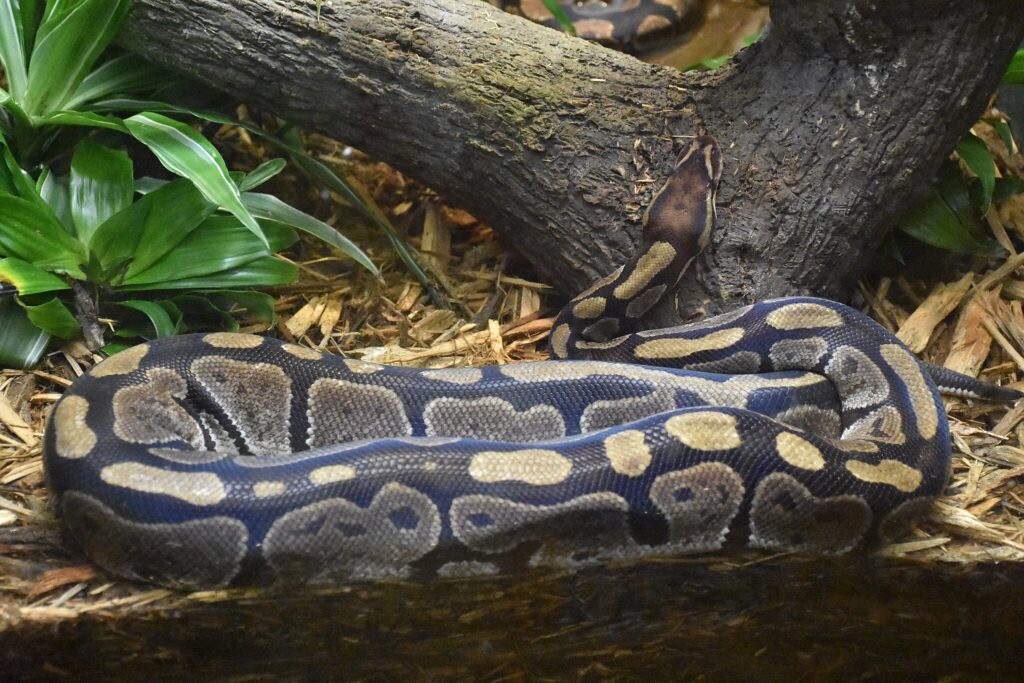
While not strictly part of habitat design, handling practices directly impact your ball python’s stress levels within its environment. Establish a consistent but moderate handling routine, generally limiting sessions to 15-20 minutes a few times weekly rather than daily prolonged handling. Always approach the enclosure slowly and avoid reaching directly for the snake from above, which mimics predatory behavior and triggers defensive responses. Support the snake’s body properly during handling, never restraining the head or grabbing suddenly, and return it to the enclosure at the first signs of stress such as rapid breathing, rigidity, or defensive posturing. Avoid handling for 48 hours after feeding or during shedding cycles when ball pythons are particularly vulnerable to stress.
Recognizing and Addressing Signs of Stress
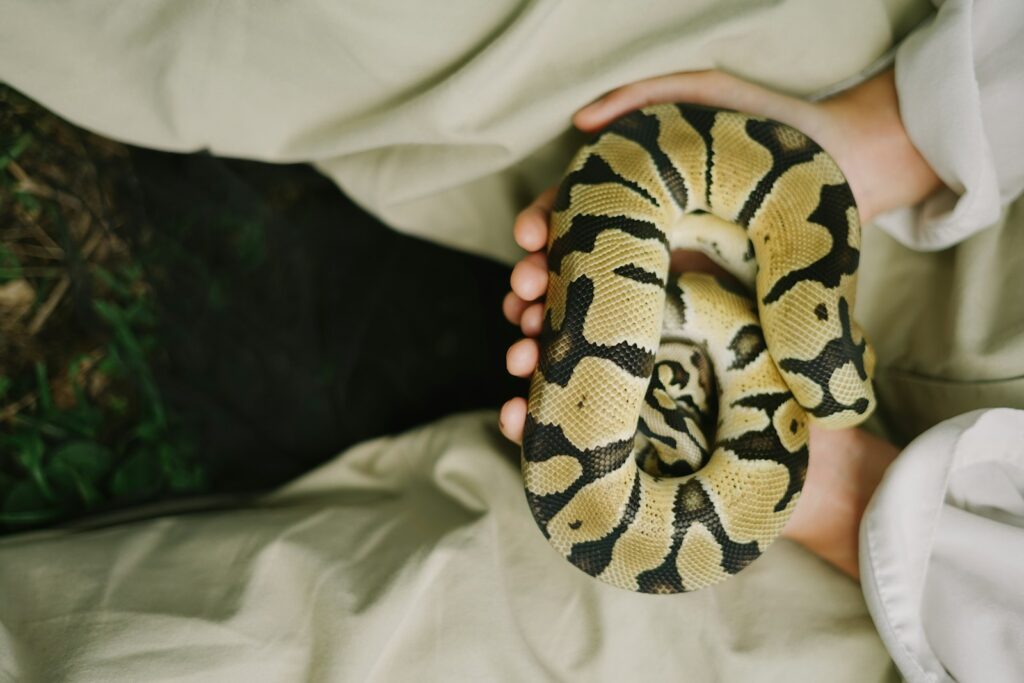
Vigilant monitoring for stress indicators allows you to make timely adjustments to your ball python’s habitat. Common signs of stress include frequent hiding (beyond normal behavior), refusing meals for extended periods, defensive posturing when approached, rapid breathing, rubbing against enclosure walls (trying to escape), or abnormal shedding patterns. More severe stress may manifest as regurgitation after meals, weight loss, or repetitive behaviors like circling the enclosure perimeter. When stress signs appear, systematically evaluate and adjust habitat parameters including temperature, humidity, hide security, and external disturbances before considering health concerns. Remember that seasonal changes, especially breeding season, may temporarily alter behavior without indicating serious problems. A properly designed low-stress habitat significantly reduces the likelihood of these issues occurring in the first place.
Maintaining Habitat Cleanliness

A clean habitat is fundamental to ball python health and stress reduction, requiring a consistent maintenance schedule. Daily maintenance should include removing waste, soiled substrate, and leftover food, as well as checking water freshness and enclosure humidity/temperature. Weekly tasks should involve deeper spot cleaning, thorough water bowl disinfection, and wiping down surfaces with reptile-safe cleaners. Monthly or bi-monthly, perform a complete habitat breakdown, replacing all substrate, thoroughly disinfecting the enclosure and all decorations with a reptile-safe disinfectant like chlorhexidine or diluted bleach solution (thoroughly rinsed and dried before reassembly). Always wash hands before and after handling your snake or maintaining its habitat, and keep separate cleaning tools for the reptile enclosure to prevent cross-contamination with other household areas.
Creating a low-stress habitat for your ball python involves thoughtful consideration of their natural behaviors and biological needs. By providing appropriate space, temperature gradients, humidity, secure hiding spots, and enrichment opportunities, you create an environment where your snake can thrive physically and behaviorally. Remember that habitat design isn’t a one-time setup but an ongoing process of observation and refinement based on your individual snake’s preferences and behaviors. With proper attention to these details, your ball python can enjoy a healthy, stress-free life in captivity for decades to come.

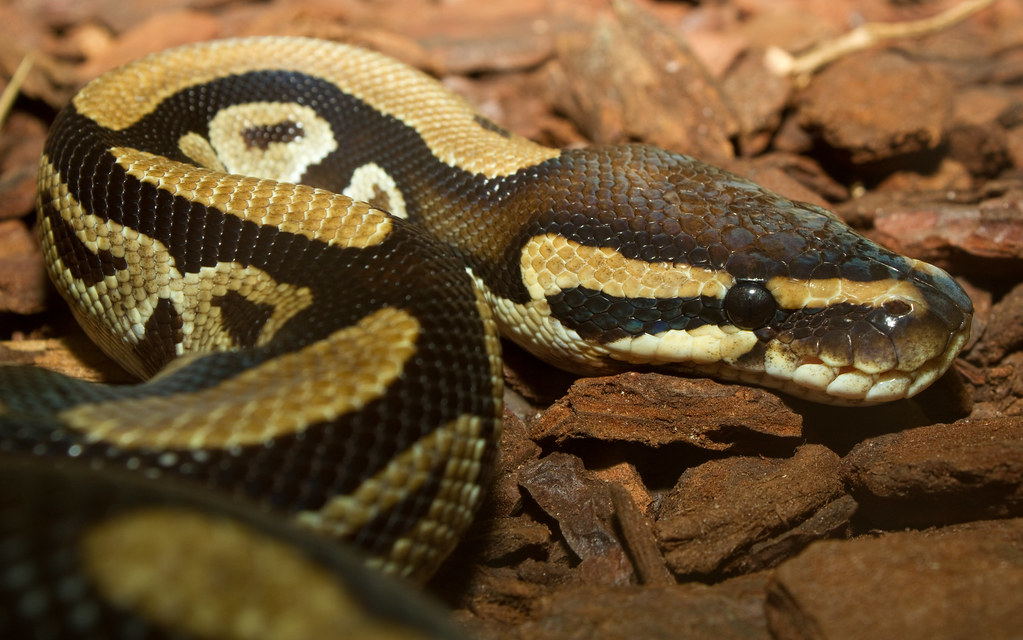
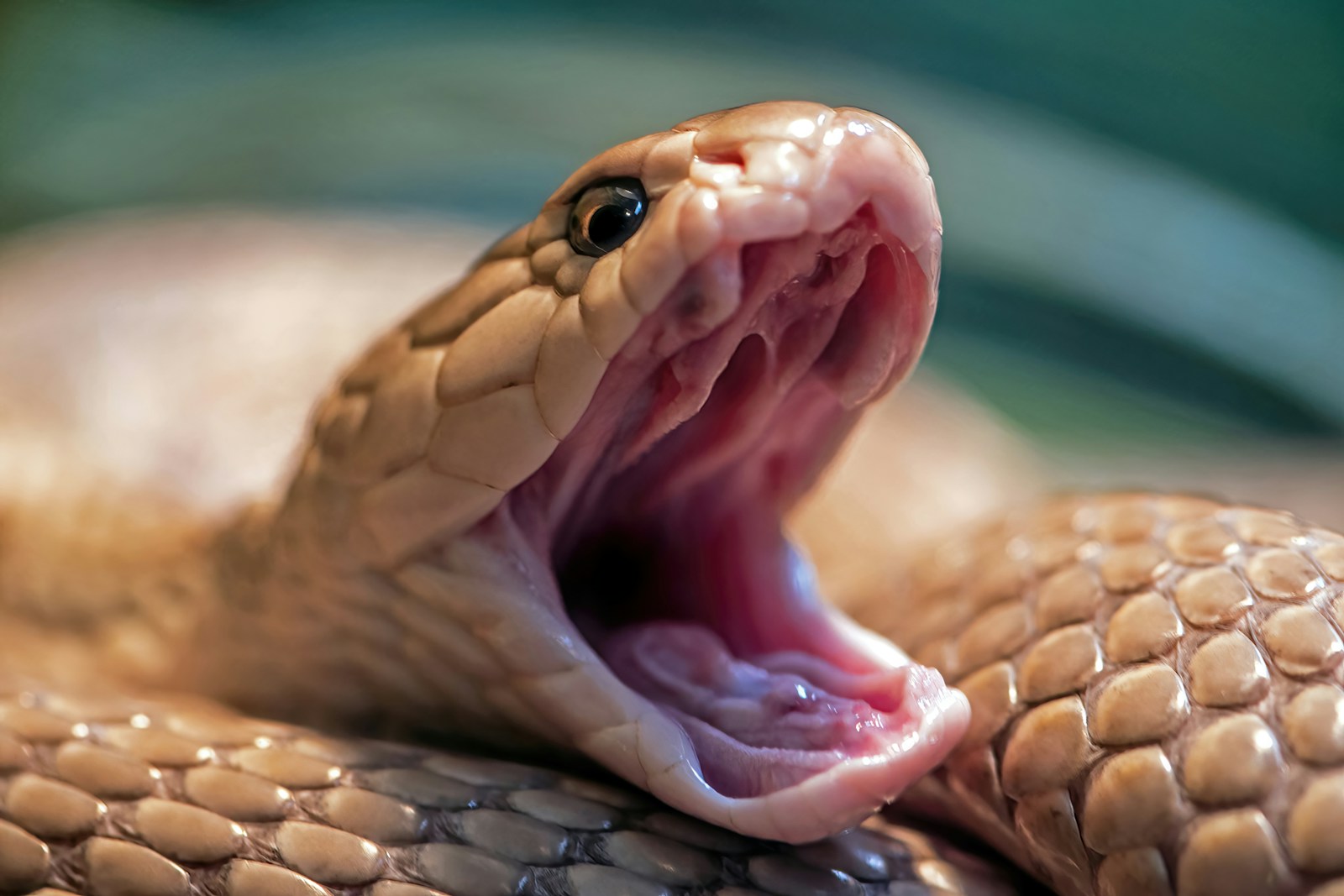



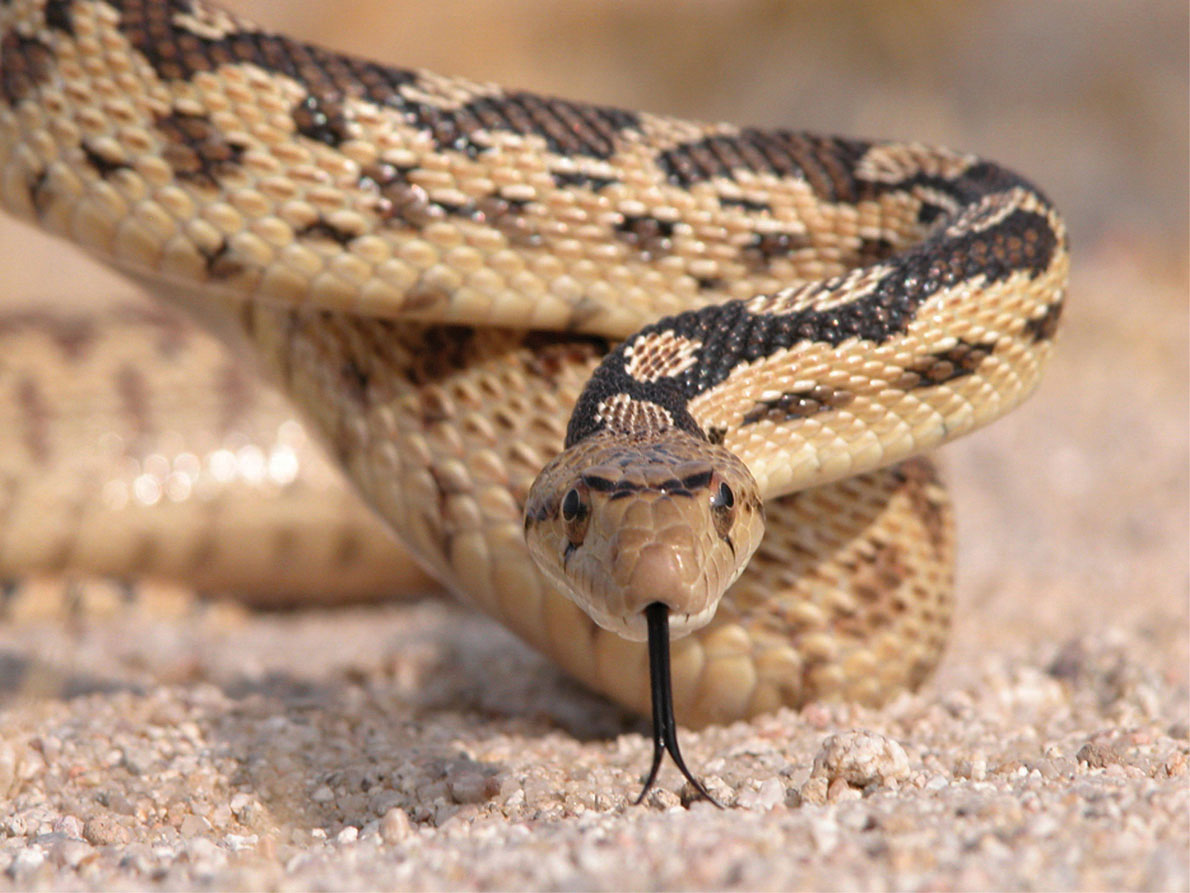


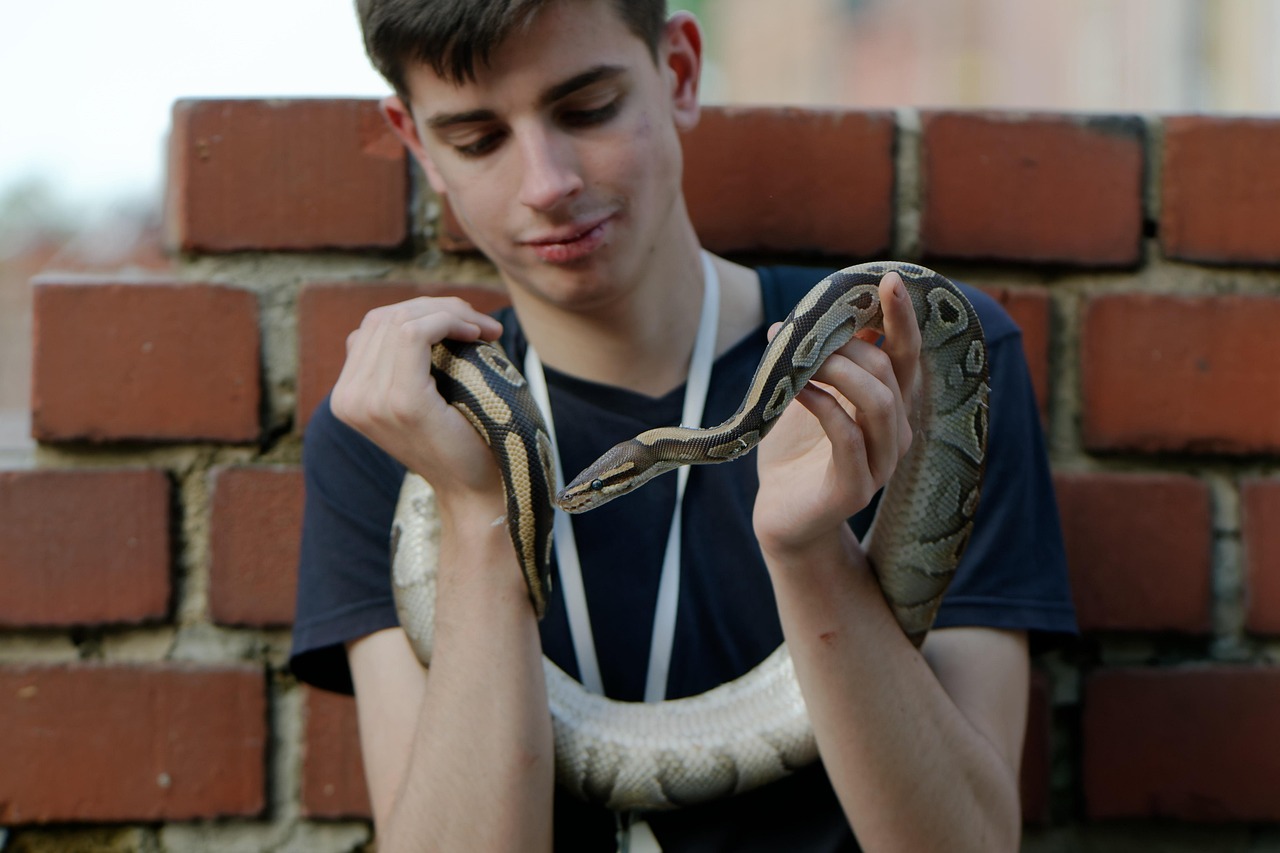
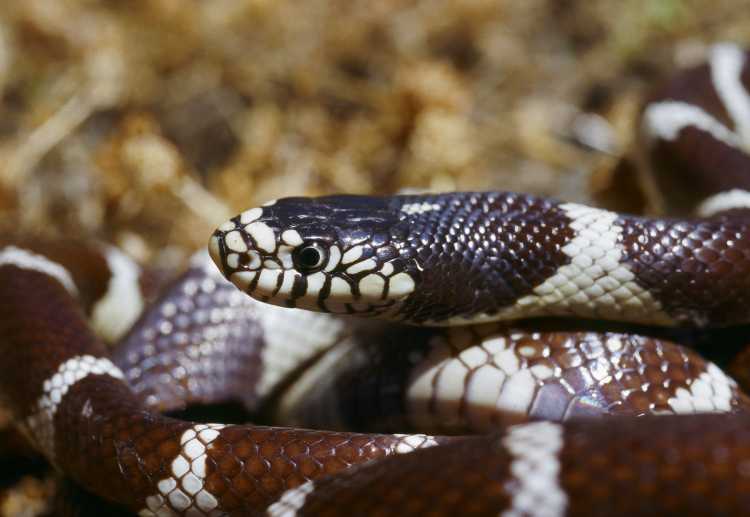
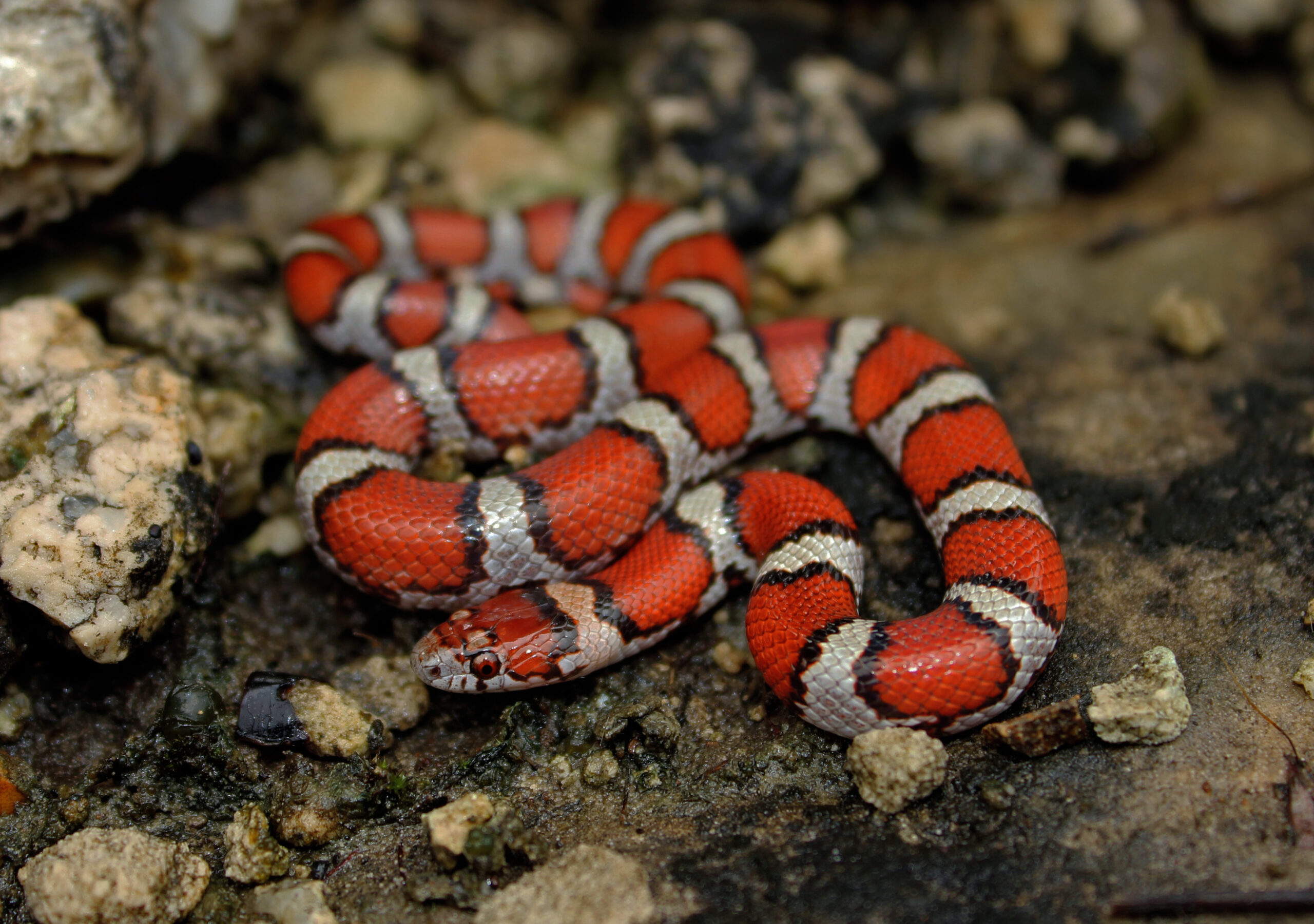




Leave a Reply